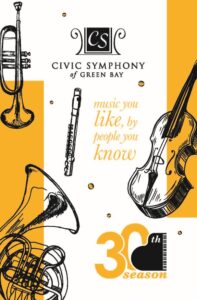Program Notes
Heroes
Civic Symphony of Green Bay
Friday, February 14, 2025
The Weidner
OVERVIEW
Our annual family concert showcases the world premiere of King Arthur: Lion in the Wilderness by St. Norbert College professor John Hennecken. This new multi-movement narrated children’s piece tells the story of the rise of the young king. By the end, King Arthur will establish Camelot and the Knights of the Round Table.
The orchestra performed an abridged version of tonight’s program earlier today for area schoolchildren in our “Music for Young Listeners” concert, as part of The Weidner’s Stage Doors educational series. We would like to thank Doctors in Recital for their grant to fund scholarships for local students to attend the morning concert. This concert was also funded in part by grants from De Pere Christian Outreach and the Green Bay Packers Foundation.
Click a title below to expand and read about the pieces on tonight’s program. We hope you learn something new and interesting about the composers and the music. If you have time in the next two weeks, please share your feedback in our concert survey.
Remember to silence your cell phone and refrain from texting, audio/video recording, or flash photography during the performance.
AT A GLANCE
Title: Prelude to Act III (from Lohengrin)
By: Richard Wagner (1813-1883)
Composed: 1850
Length: 3.5 minutes
Instrumentation:
3 flutes, 3 oboes, 3 clarinets, 3 bassoons, 4 horns, 3 trumpets, 3 trombones, tuba, timpani, percussion (cymbals, tambourine, triangle), and strings
CSGB premiere performance
ABOUT THE COMPOSER
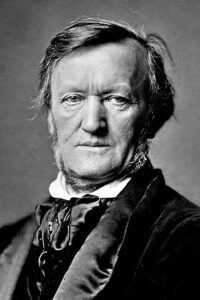
Richard Wagner
- German composer and conductor known for his operas.
- His music has complex textures with rich harmonies and orchestration.
- Wagner made elaborate use of the leitmotif – a musical phrase associated with individual characters, places, or ideas.
ABOUT THE MUSIC
Lohengrin is one of Wagner’s three “romantic” operas. It was written 175 years ago in 1850, and tells the story of a knight named Lohengrin who heroically rescues a woman named Elsa. At our concert, you’ll hear the prelude (or introductory music) to the final section of the opera after the two main characters get married. This opera is most famous for the bridal chorus – you may know the tune as “Here Comes the Bride.”
AT A GLANCE
Title: For the Love of a Princess (from Braveheart)
By: James Horner (1953-2015), arranged by DICO
Composed: 1995
Length: 4 minutes
Instrumentation:
chamber orchestra of flute, oboe, English horn, horn, 2 trumpets, 2 trombones, percussion (suspended cymbal), piano, and strings
CSGB premiere performance
ABOUT THE COMPOSER
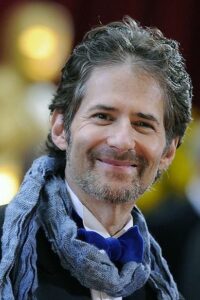
James Horner
- American film composer and conductor.
- Known for incorporating choral and electronic elements in his music, and for his use of Celtic music motifs.
- Horner won two Academy Awards for his music composition for James Cameron’s Titanic, which became the best-selling orchestral film soundtrack of all time.
ABOUT THE MUSIC
“For the Love of a Princess” is the central love theme from the movie Braveheart. The tune represents the passionate relationship between William Wallace and Princess Isabelle of France.
The melody is characterized by its soaring, lyrical quality, conveying a sense of longing and sacrifice. Listen for the English horn solos with plenty of grace notes to emulate the characteristic sound of the uilleann pipes (the “bagpipes” from Ireland).
AT A GLANCE
Title: Excerpt from Symphony No. 3 in E-flat major, Op. 55 “Eroica”
By: Ludwig van Beethoven (1770-1827)
Composed: 1804
Length: 6 minutes
Instrumentation:
2 flutes, 2 oboes, 2 clarinets, 2 bassoons, 3 horns, 2 trumpets, timpani, and strings
Previous CSGB performances:
2019 October
2006 October
ABOUT THE COMPOSER
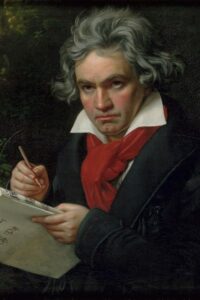
Ludwig van Beethoven
- German composer and pianist.
- His pieces are the most performed of the classical music repertoire, spanning the transition from the Classical period to the Romantic era.
- Beethoven continued to conduct and compose while his deafness advanced, but gave up public appearances in 1815 when he was almost completely deaf.
ABOUT THE MUSIC
Beethoven’s first two symphonies begin with slow introductions, but his Third Symphony immediately springs to life with two brusque chords and plays with harmonic and rhythmic tension. He originally titled the work “Bonaparte” but scratched that out in his manuscript after Napoleon crowned himself emperor in 1804. The symphony was published in 1806 as “Heroic Symphony…composed to celebrate the memory of a great man.”
Tonight, the Civic Symphony will play the second half of the first movement of Beethoven’s symphony, commonly referred to as the recapitulation (or recap) of the opening themes.
AT A GLANCE
Title: Rocky Broadway
Arranged by: Patrick Roszell (b. 1976)
Composed: 2015
Length: 5 minutes
Instrumentation:
2 flutes, oboe, 2 clarinets + bass clarinet, bassoon, 2 horns, 3 trumpets, 3 trombones, tuba, timpani, percussion (bells, bongos, crash cymbals, drumset, suspended cymbal, tambourine, wind chime, xylophone), and strings
Previous CSGB performance:
2023 July
ABOUT THE ARRANGER
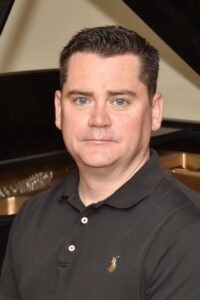
Patrick Roszell
- Composer and arranger of band, orchestra, and choral music.
- Lives in the state of Alabama.
- Roszell’s pieces have been performed at the Midwest Band and Orchestra Clinic and the Music for All National Concert Festival.
ABOUT THE MUSIC
Rocky Broadway is a medley of three songs including Rocky’s theme song “Gonna Fly Now,” the slower ballad “Fight from the Heart,” and the exciting “Eye of the Tiger.” Two of the songs can also be heard in the Rocky movies, but the ballad is original music from the Broadway musical where the main character sings to his boxing hero looking for inspiration.
AT A GLANCE
Title: I Vow to Thee, My Country
By: Gustav Holst (1874-1934), arr. by Geoff Knorr
Composed: 2014
Length: 5.5 minutes
Instrumentation:
2 flutes, oboe + English horn, 2 clarinets, 2 bassoons, 4 horns, 2 trumpets, 2 trombones, tuba, timpani, percussion (bass drum, glockenspiel, suspended cymbal, tam-tam, tubular bells), keyboard, and strings
CSGB premiere performance
ABOUT THE COMPOSER
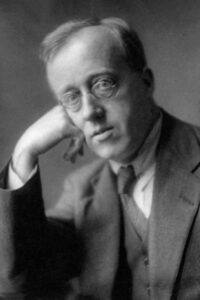
Gustav Holst
- English composer, arranger, and teacher.
- Best known for his orchestral suite The Planets which has movements named after the planets in our solar system.
- Gustav’s daughter Imogen said her father had difficulty writing long works like symphonies and was inspired to write a suite with a separate character for each movement.
ABOUT THE MUSIC
In 1921, Gustav Holst created I Vow to Thee, My Country by setting a poem by Sir Cecil Spring Rice to music. The music came from the “Jupiter” movement of Holst’s orchestral suite The Planets. He later named this music “Thaxted.” The hymn is played at patriotic occasions in the United Kingdom, and is often heard at funerals with a military connection.
Note from the arranger:
“Gustav Holst’s timeless “Thaxted” melody is a dear one to me. The melody served as a processional for my beautiful bride’s walk down the aisle in my own wedding. When the opportunity arose to compose Queen Elizabeth I’s theme music in the 4X turn-based strategy video game, Sid Meier’s Civilization V, I was excited at the prospect of composing a new arrangement of the melody. My decision to use Thaxted as a starting point was an obvious one. In addition to my personal attachment to the melody, I Vow to Thee, My Country is the British patriotic hymn sung to the very same melody that has been used in many contemporary high profile British weddings and funerals. Of course, the melody also makes a brief appearance in “Jupiter” from Holst’s popular The Planets suite. This concert edition updates the version included in Civilization V with an additional optional choir among other minor changes. I would like to dedicate this version to my wife. Without her enduring patience and encouragement, it simply would have never come to be.” ~Geoff Knorr
AT A GLANCE
Title: The Magnificent Seven Suite
By: Elmer Bernstein (1922-2004), arr. by Daniel de la Rosa Oliva
Composed: 1960
Length: 6 minutes
Instrumentation:
3 flutes, 2 oboes + English horn, 2 clarinets + bass clarinet, 2 bassoons, 4 horns, 3 trumpets, 4 trombones, tuba, timpani, percussion (bass drum, claves, cymbals, guiro, snare drum, tambourine, woodblock, xylophone), keyboard, guitar, and strings
CSGB premiere performance
ABOUT THE COMPOSER
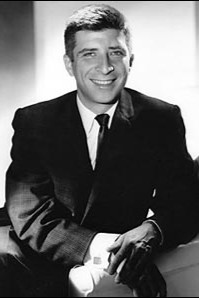
Elmer Bernstein
- American composer and conductor.
- Wrote more than 150 original film scores, as well as the music for nearly 80 television productions.
- Bernstein’s work earned 14 Academy Award nominations (winning one for Thoroughly Modern Millie), seven Golden Globe Awards, five Grammy Awards, and two Tony Award nominations.
ABOUT THE MUSIC
The Magnificent Seven is a 1960 American Western film starring Yul Brynner, Eli Wallach, Horst Buchholz, James Coburn, Brad Dexter, Steve McQueen, Robert Vaughn, and Charles Bronson. It was an Old West-style remake of Akira Kurosawa’s 1954 Japanese film Seven Samurai. The title characters are hired to protect a small village in Mexico from a group of marauding bandits and their leader. Tonight you’ll hear Elmer Bernstein’s iconic main theme from the movie.
Note from the composer:
“The purpose of the music was primarily to increase excitement, but is also served in a quite specific way to provide pacing to a film. Observe that the music is faster in tempo than anything that is actually happening on the screen. The film needed music to help give it drive. In that sense, it is a quite physical score, as much foreground as background. It was a film that also needed music to suit its locale, and in this case I felt it should have a definite Chicano sound, a blending of many elements of American and Mexican music. Every once in a while – it doesn’t happen often – you hit on something really quite thrilling. I remember being very excited when I found that opening rhythm. It was like a surge of energy. That’s what people really remember.” ~Elmer Bernstein
AT A GLANCE
Title: King Arthur: Lion in the Wilderness
By: John Hennecken (b. 1987)
Composed: 2024
Length: 26 minutes
Instrumentation:
2 flutes, 2 oboes, 2 clarinets, 2 bassoons, 4 horns, 2 trumpets, 3 trombones, tuba, timpani, percussion (bass drum, brake drum, crash cymbals, crotales, glockenspiel, marimba, snare drum, suspended cymbal, tam-tam, 4 tom-toms, triangle, vibraphone, whip, 2 woodblocks, wooden wind chime), children’s choirs, narrator, and strings
World premiere performance
ABOUT THE COMPOSER

John Hennecken
- Music fuses classical form and intricate counterpoint with modern approaches to tonality and timbre.
- Orchestral works have been commissioned and performed by the Fox Valley Symphony Orchestra, Longmont Symphony Orchestra, Augusta Symphony Orchestra, and Takazuka City Symphony Orchestra.
- Directs the Music Program and teaches composition and theory at St. Norbert College.
ABOUT THE MUSIC
King Arthur: Lion in the Wilderness by John Hennecken is dedicated to the memory of four musicians with significant ties to the Civic Symphony of Green Bay.
- Betty D. Brown
- Kathy Lisch Collins
- Gerald Mattern
- Janet Bond Sutter
The orchestra thanks the surviving families for their generous financial contributions which allowed us to commission this important new work for the symphonic repertoire. We’re pleased to premiere the piece today and share it with the community of Green Bay.
Note from the composer:
“My musical version of the King Arthur Legend, loosely based on Thomas Malory’s 1485 book, focuses on the young king and his many trials along the way to establishing Camelot and the Knights of the Round Table. The symphony tells of Arthur’s journey both worldly and spiritual – his difficult path to Camelot parallels his journey to Christ. While the narrations tell the story of Arthur’s quest, the choral music will feature sacred Latin texts that evoke Arthur’s interaction with the supernatural. Having been inspired by how the book attaches Christian holidays to significant events in Arthur’s life, I went a step further by rooting much of the music in Gregorian chant. The work’s foundation in chant attests to the divine force that empowers Arthur to pull Excalibur from the stone and the faith that is needed to give the sword its strength.” ~John Hennecken
PART ONE
I. Baptism, Excalibur, and Coronation (7 minutes)
Narration:
Galloping through fog on Christmas Day, old knight on a horse makes his way.
To an ancient church of wood and stone, he brings a boy of name unknown.
Incense, stained glass, holy water and host, the boy is baptised: Father, Son, and Holy Ghost.
Destined to lead and win great fame, it is decided that Arthur will be his name.
Fílius meus es tu, ego hódie génuite.
Thou art my son, this day I have begotten thee. (Psalm 2:7)
12 years later to the day, King has died, in tomb he lay,
Christmas Mass, nobles pray and sing, for a sign from God:
Who…will be King?
Vidérunt omnes fines terrae salutáre Dei nostri.
All the ends of the earth have seen the salvation of our God. (Psalm 98:3)
Outside the cathedral, crowd gathers ’round
a mysterious object from above has been found
stuck in anvil, atop marble stone
a sword…stands alone.
Engraved on the stone it reads:
“WHO SO PULLETH OUT THIS SWORD OF THIS STONE AND ANVIL IS RIGHTWISE KING BORN OF ENGLAND”
Many try to unsheathe the sword…
try and fail…
to pure strength there is no reward.
Then, young Arthur, unknown in the land,
steps forward slowly, and tries his hand.
Ecce ego vobiscum sum omnibus diebus.
Behold: I am with you always. (Matthew 28:20)
With sword raised high before the nation,
“Long Live the King” is shouted in elation.
Dominábitur a mari usque ad mare, et a flúmine usque ad términos orbis terrárum.
He shall have dominion from from sea to sea, and from the river unto the ends of the Earth. (Psalm 72:8)
II. The Lion at War (7 minutes)
Narration:
A young king is crowned in glory;
however, there is more to this story:
An open field by the River Glen,
sounds of calvary and knightly men,
Contenders to the throne look on Arthur with spite,
Calling on armies, they prepare to fight.
The enemy approaches.
Arthurs army prepares to charge.
King riding in the lead,
Brave Arthur sets the pace,
War horses at full speed,
Knights in armor face to face.
Fighting with great courage,
Arthur attacks with force,
Still only a mortal man,
Arthur is knocked off his horse.
De profúndis clamávi ad te, Dómine: Dómine exáudi vocem meam.
Out of the Depths I have cried to thee, O Lord. Lord, hear my voice. (Psalm 130:1)
Wielding Excalibur with all his might,
sword shining as 30 torches bright,
Fighting as a lion with his band,
Arthur’s army gains the upper hand.
A valiant effort against relentless foes,
Arthur’s army takes ruthless blows,
left with no choice but retreat,
they escape to the forest, in defeat.
PART TWO
III. Revelation (6 minutes)
Narration:
Fleeing from danger across the channel, Arthur and his Knights set up camp by the Broceliande Forest. Arthur ventures into the woods to contemplate his strategy, but mysteriously, he cannot find his way out. The sun sets as he makes his way deeper and deeper into the darkness.
Quickly past Arthur a runs a deer,
deeper into the Forest, the King is filled with fear.
To a clearing the forest led,
A knight there glows, his armor red.
Unknown enemies, swords are raised,
Red Knight charges, by Excalibur…unfazed.
Sword is shattered,
Arthur knocked down,
defeated and battered,
asleep lays the crown.
Awaken by monstrous noises,
fitful slumber ceased,
in darkness Arthur rises,
and chases the beast.
Running on deer’s feet, a lion’s legs, a leopard’s body, and snake’s head,
Wounded Arthur too slow to keep in sight,
monster runs barking into the night.
Confused, lost, and timorous,
divine song calls in the wilderness.
Qui mihi minístrat, me sequátur: et ubi ego sum, ilic et miníster meus erit.
If any man serve me, let him follow me; and where I am, there shall also my servant be. (John 12:26)
IV. Journey to Camelot (6 minutes)
Narration:
Arthur must make a choice.
To chase the questing beast?
To hunt the Red Knight for vengeance?
Arthur follows the angelic voice,
through the woods, in search of transcendence.
Through the trees, a boat, a clearing,
rain on black lake and lightning searing,
Arthur rides the waves into the storm.
Ego sum, nolite timere.
It is I; be not afraid. (John 6:20)
Storm has passed,
Water like glass,
enemy forces watch from land,
whirlpool appears, Lady of the Lake nears,
reforged Excalibur…in hand.
Arthur’s spirit reborn, from all nobles, loyalty sworn,
King and knights make table round,
Legends of Camelot for ages…resound!
Ca-li-cem salutáris accípiam, et nomen Dómini invocábo.
I will take the cup of Salvation, and call upon the name of the Lord. (Psalm 116:13)
The orchestra thanks Timberly Kazmarek Marbes for researching and compiling these program notes.
PROGRAM BOOK
You can also view a copy of the printed program book online.

